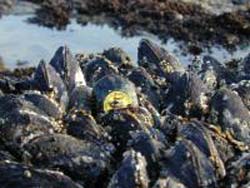Early detection of Harmful Algal Blooms (HABs) allows fish farmers to make timely key decisions in order to minimise the damage to aquaculture. To aid in this…

The Earth Institute at Columbia University, June 8, 2005–The end of the recurring, 100,000-year glacial cycles is one of the most prominent and readily…
It has been 2.3 billion years since Earth’s atmosphere became infused with enough oxygen to support life as we know it. About the same time, the planet became encased in ice that some scientists speculate was more than a half-mile deep. That raises questions about whether complex life could have existed before “Snowball Earth” and survived, or if it first evolved when the snowball began to melt.
New research shows organisms called eukaryotes — organisms of one or more

Pre-cooked mussels?
Based on current trends for both air and water temperatures, by 2100 the body temperatures of California mussels — found along thousands of miles of coast in the northeast Pacific Ocean and not just in California –- could increase between about 2 degrees F and 6.5 F depending on where they live.
For areas where mussels already are living close to the edge, chances are that increases of 6.5 F will kill them, researchers say.
Unlike humans,
Detailed information on greenhouse gasses and a subtropical heat wave at the North Pole 55 million years ago is providing information about the Earth’s past as well as a portent for its future, according to reports in the June 1 issue of Nature.
An expedition to the Artic Ocean in 2004 by a team of scientists aboard a fleet of icebreakers collected samples by drilling into the floor of the ocean. The project was part of an international research effort, the Integrated
Mathematicians from Novosibirsk and Krasnoyarsk, working on a joint project with American colleagues (sponsored by the CRDF and the Federal Agency for Science and Innovations (Rosnauka)) have improved the tsunami forecasting system. To this end, they applied the method of the so-called circulation of tsunami data obtained in a real-time mode. This newest method is based on the latest results achieved by researchers in the theory and numerical algorithms of inverse problem solution.
A tsu